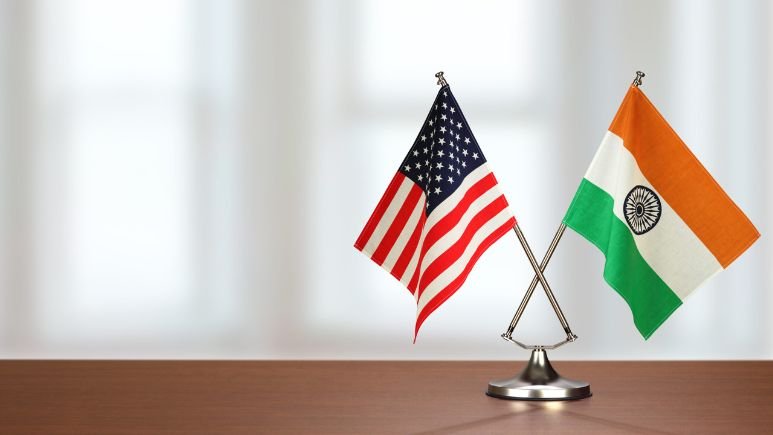US India Defence Deal 2025: A Strategic Upgrade for the Indian Military
India has approved a new 93 million dollar defence purchase from the United States that will supply the Indian Army with FGM 148 Javelin anti tank guided missiles and M982A1 Excalibur precision artillery projectiles. The US Defense Security Cooperation Agency confirmed the approval on November 20, stating that the package strengthens both India’s modernisation drive and the long term military partnership between New Delhi and Washington.
The agreement is part of a wider trend of closer strategic cooperation between the two countries. It also arrives during a moment of rising regional security concerns, with India modernising its forces to meet challenges along the India China border and tensions with Pakistan.
For readers seeking context on the process, this arrangement falls under the United States Foreign Military Sales program. More information about this system can be found in public resources covering US congressional oversight of foreign military sales and US defence export approvals.
What the Package Includes
Javelin Anti Tank Missiles
The purchase includes one hundred Javelin missiles along with twenty five command launch units and a complete support package. The system is widely regarded as one of the most effective portable anti armour weapons in service. It uses a fire and forget design that allows soldiers to reposition immediately after launch. The missile’s arcing top attack flight path lets it strike tanks at their most vulnerable point.
The Indian Army has evaluated the Javelin system in previous trials, and this contract provides both operational rounds and training equipment. The package also includes simulators, spare components, maintenance kits, and one fly to buy test missile. Information about the missile’s performance is publicly available from resources explaining precision guided munitions and modern anti armour warfare.
Excalibur Precision Artillery Projectiles
The deal also includes up to two hundred sixteen Excalibur M982A1 rounds. These GPS guided shells are capable of striking targets at more than forty kilometres with a level of accuracy that allows the Army to conduct high precision fire missions with minimal collateral effects.
Excalibur has been used in several recent conflicts and is considered one of the most accurate long range artillery rounds in service. The addition of these shells significantly enhances India’s stand off strike capability and supports fast response operations in difficult terrain.
Why the Timing Matters
Heightened Threat Perception
India faces evolving military challenges along the Line of Actual Control with China where both sides have increased deployments. The Javelin missile offers the Army a proven system for stopping armoured incursions in mountainous regions. The Excalibur round improves India’s ability to respond to threats with precise, long range fire.
Regional Deterrence
The purchase contributes to India’s ongoing effort to maintain a credible deterrent against both China and Pakistan. Although the new systems do not shift the overall balance of power, they provide India with targeted improvements in high priority areas.
Readers looking for context on these tensions may refer to public information about the India China border dispute and the broader security situation in South Asia.
Strengthening the Indo US Partnership
The DSCA stated that the sale supports US foreign policy goals by enhancing the defence relationship with India, which remains a key partner in Indo Pacific security. India is designated a Major Defence Partner by the United States, a status that promotes closer cooperation in areas such as intelligence sharing, logistics, and advanced technology transfer.
Implementation and Delivery
India already fields artillery and anti armour units capable of integrating these systems. According to US officials, no American personnel will be required on site for long term support. Contractors from Lockheed Martin and RTX will provide equipment, technical documentation, and lifecycle maintenance services.
Deliveries are expected to begin within twelve to eighteen months, following standard procedures used in US foreign military sales.
India’s Broader Modernisation Path
The new deal is part of a wider push to upgrade India’s defence inventory. Recent initiatives include acquisitions of armed drones, fighter aircraft, air defence systems, and maritime surveillance platforms. The government continues to promote domestic production under the Make in India programme. Although this specific agreement does not include technology transfer, analysts note that future Indo US collaborations may explore co development options.
For readers tracking this policy area, additional background on Make in India defence manufacturing and India’s defence procurement process can be found in open policy documents.
Regional and Geopolitical Implications
This arms package reinforces India’s position as a key security partner for the United States in the Indo Pacific. It also signals continued American willingness to support India’s defence needs at a time of expanding Chinese influence. The deal follows increased cooperation through the Quad and other regional security dialogues.
While the acquisition alone will not transform the regional military environment, it enhances India’s readiness and demonstrates steady progress in a growing strategic partnership.
Reactions from India and the United States
Defence Minister Rajnath Singh stated that the deal provides a vital upgrade for Indian forces and aligns with the country’s commitment to maintaining a strong defensive posture. US officials described India as an increasingly capable military partner with the capacity to integrate sophisticated systems without extensive external support.
Security analysts note that the deal is both functional and symbolic. It supplies India with important battlefield tools and signals continued trust between the two governments.
Looking Ahead With the contract approved and notifications complete, both sides are preparing for delivery, training, and final integration. Analysts expect further discussions between India and the United States on advanced technology cooperation, including possible joint production and research initiatives in future agreements.


